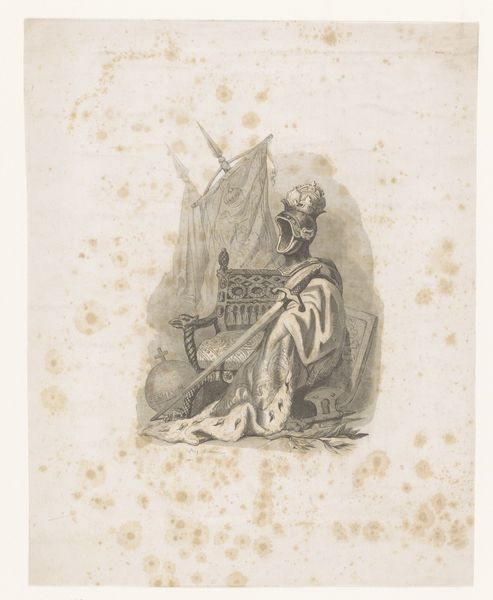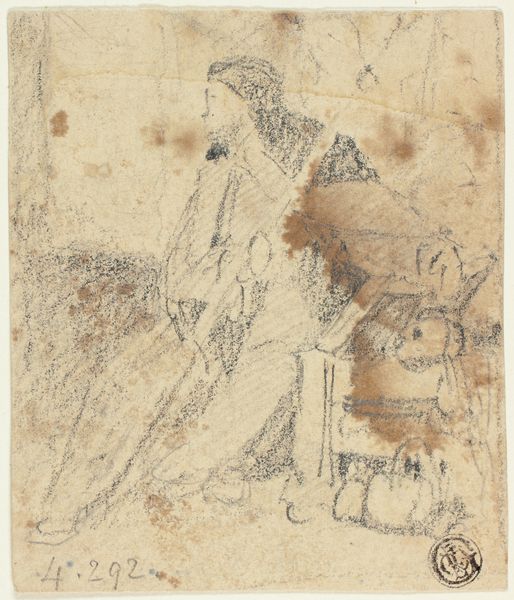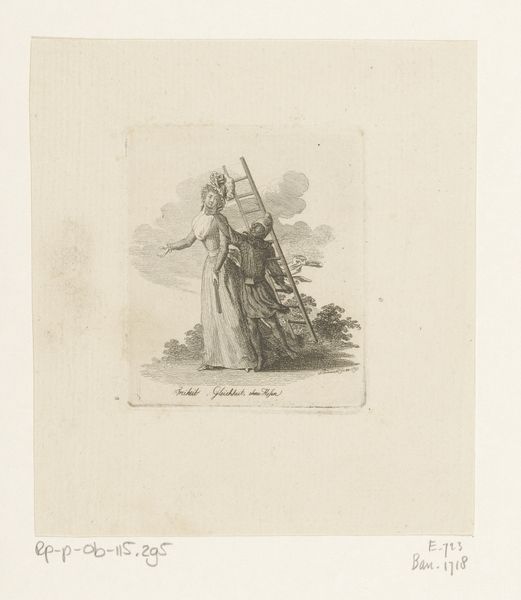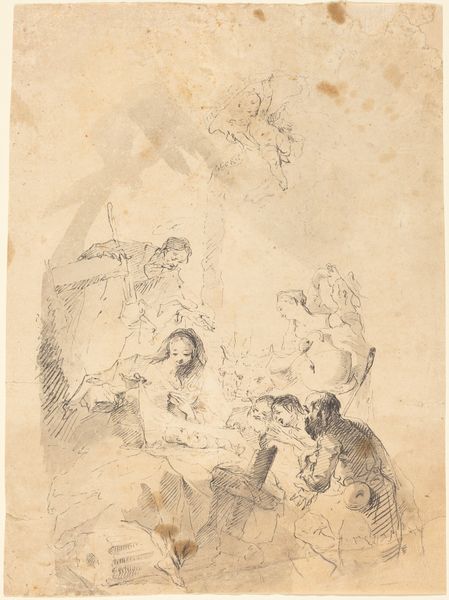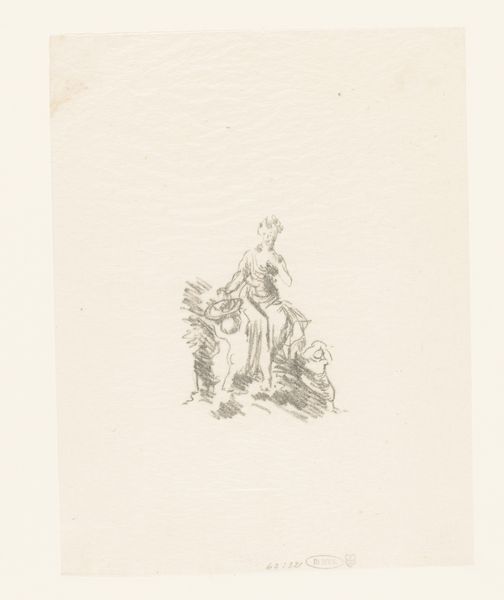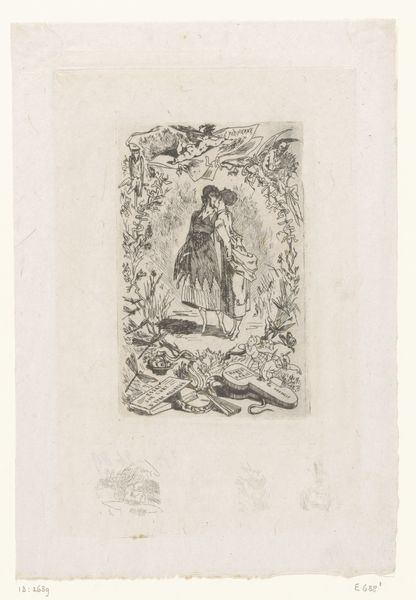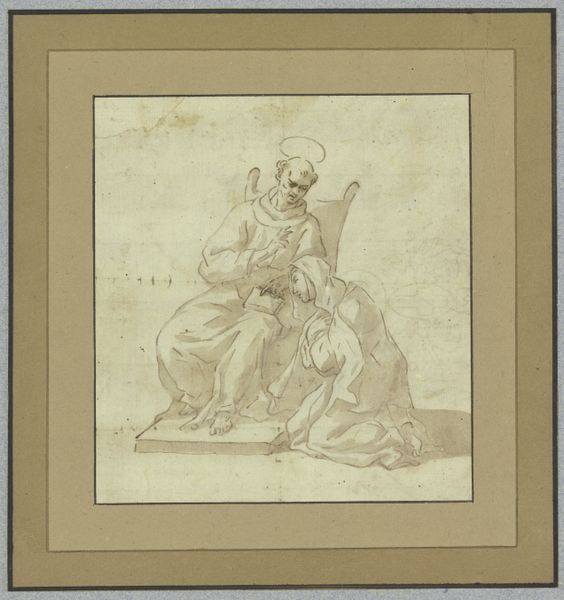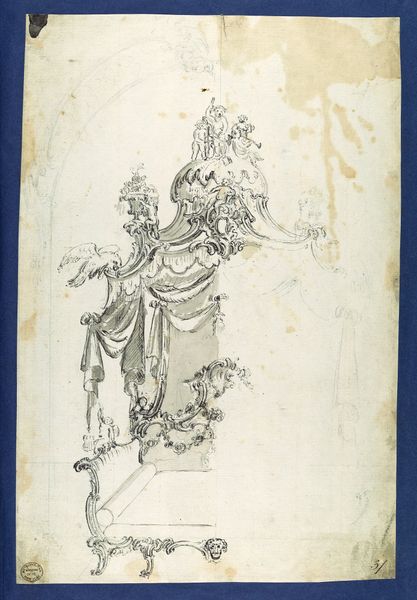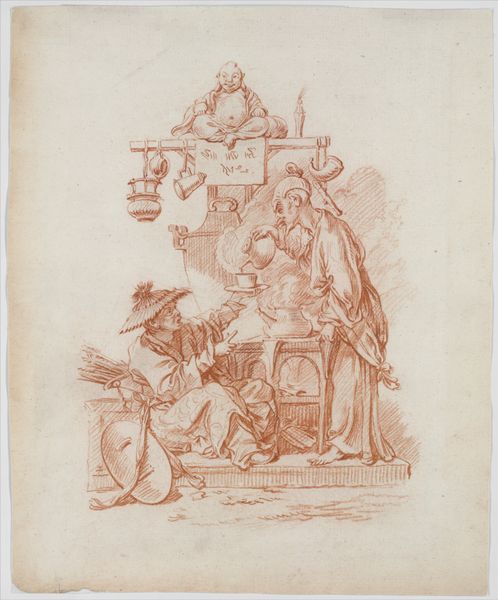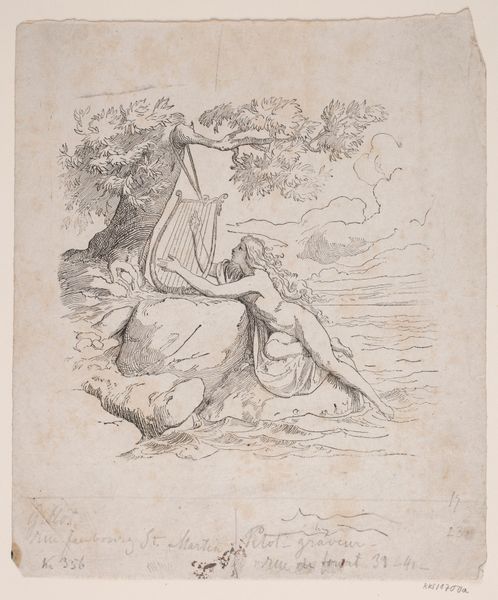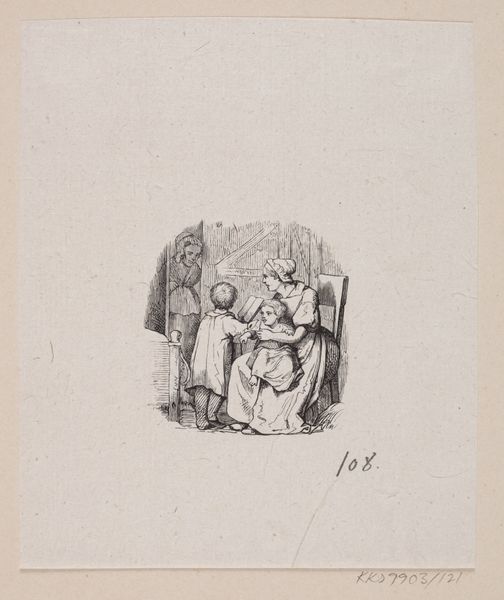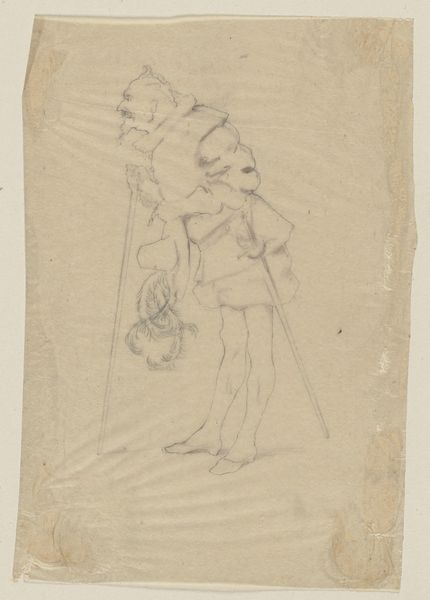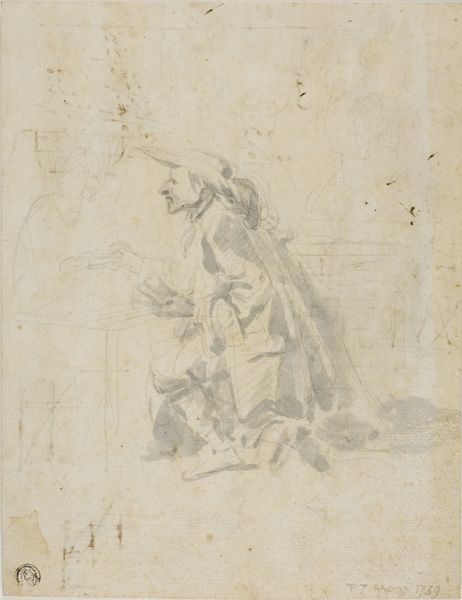
print, woodcut, engraving
#
allegory
# print
#
figuration
#
romanticism
#
woodcut
#
engraving
Dimensions: 169 mm (height) x 153 mm (width) (bladmaal)
Curator: This intriguing title vignette, created in 1841 by Axel Theodor Kittendorff, offers a window into the scholarly world of its time. The engraving, intended for Mag. Wiborg’s disputation, is currently held in the collection of the SMK, the National Gallery of Denmark. Editor: My first thought is that this piece radiates an aura of serene power. The figure is majestic but also approachable, surrounded by symbolic creatures that feel both familiar and slightly unsettling. It really captures a sense of scholarly authority tempered by imaginative openness. Curator: Exactly. The central figure, presumably representing Wiborg himself, is portrayed with godlike attributes. Note the halo-like sunburst around his head, combined with earthly figures—a seated scholar amidst allegorical creatures, suggesting a bridge between the divine and the academic realms. What does that juxtaposition convey to you? Editor: Well, it makes me think about the Romantic era’s investment in the power of individual genius. This imagery elevates intellectual pursuit almost to a religious calling. It also reflects the university’s function as a sanctified space, imbuing scholarship with tremendous social significance. The use of visual symbols and allegory roots the cultural meaning of wisdom into a familiar vocabulary. Curator: The choice of mythical creatures like the griffin and the perhaps celestial animals reinforces that. Kittendorff is invoking a shared cultural lexicon, a shorthand to signify profound concepts through visual cues readily grasped by the learned audience of the time. The small, almost grotesque figures contrast strangely with the main figure, though. They are a stark reminder that knowledge isn't always pretty, and perhaps one has to go through an odd journey to obtain wisdom. Editor: Indeed. I see the piece as representative of how institutions of knowledge self-fashioned themselves. This is a fascinating artifact because it gives us a sense of not only the era’s aesthetic values but how academic authority was being visually constructed and disseminated. Curator: And how that was a way to communicate continuity over centuries, the endurance of intellectual power, which still has cultural resonance. What an experience it's been to delve into this piece! Editor: Absolutely. I find it revealing how this image allows us to dissect and see a new perspective into 19th century society’s perception of wisdom, power, and scholarly identity.
Comments
No comments
Be the first to comment and join the conversation on the ultimate creative platform.
